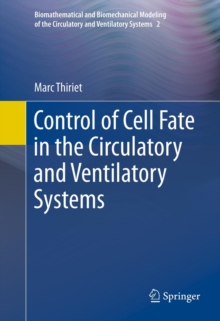
Intracellular Signaling Mediators in the Circulatory and Ventilatory Systems Hardback
by Marc Thiriet
Part of the Biomathematical and Biomechanical Modeling of the Circulatory and Ventilatory Systems series
Hardback
Description
The volumes in this authoritative series present a multidisciplinary approach to modeling and simulation of flows in the cardiovascular and ventilatory systems, especially multiscale modeling and coupled simulations.
The cardiovascular and respiratory systems are tightly coupled, as their primary function is to supply oxygen to and remove carbon dioxide from the body's cells. Because physiological conduits have deformable and reactive walls, macroscopic flow behavior and prediction must be coupled to phenomenological models of nano- and microscopic events in a corrector scheme of regulated mechanisms when the vessel lumen caliber varies markedly.
Therefore, investigation of flows of blood and air in physiological conduits requires an understanding of the biology, chemistry, and physics of these systems together with the mathematical tools to describe their functioning.
Volume 4 is devoted to major sets of intracellular mediators that transmit signals upon stimulation of cell-surface receptors. Activation of signaling effectors triggers the release of substances stored in cellular organelles and/or gene transcription and protein synthesis.
Complex stages of cell signaling can be studied using proper mathematical models, once the role of each component is carefully handled. Volume 4 also reviews various categories of cytosolic and/or nuclear mediators and illustrates some major signal transduction pathways, such as NFkappaB axis, oxygen sensing, and mechanotransduction.
Information
-
Item not Available
- Format:Hardback
- Pages:1064 pages, 339 Tables, black and white; XV, 1064 p.
- Publisher:Springer-Verlag New York Inc.
- Publication Date:25/09/2012
- Category:
- ISBN:9781461443698
Other Formats
- PDF from £152.58
- Paperback / softback from £179.99
Information
-
Item not Available
- Format:Hardback
- Pages:1064 pages, 339 Tables, black and white; XV, 1064 p.
- Publisher:Springer-Verlag New York Inc.
- Publication Date:25/09/2012
- Category:
- ISBN:9781461443698










